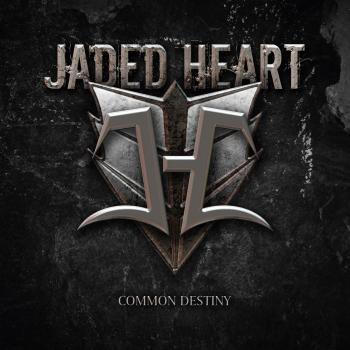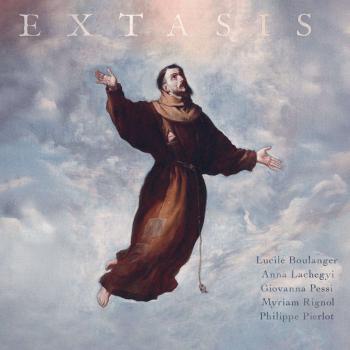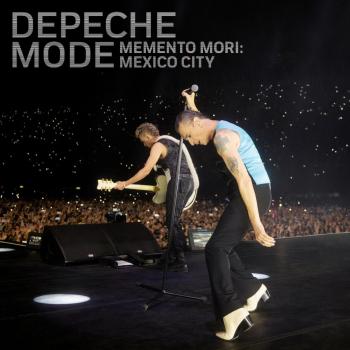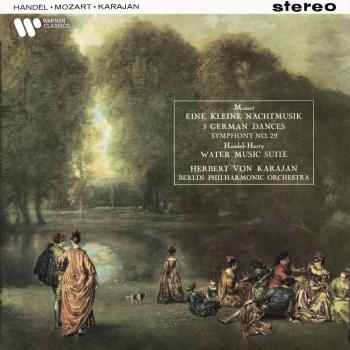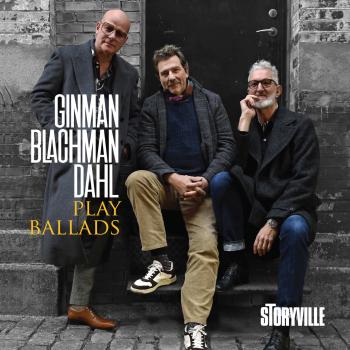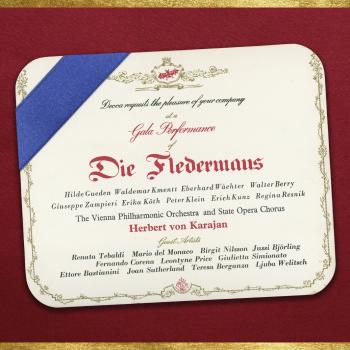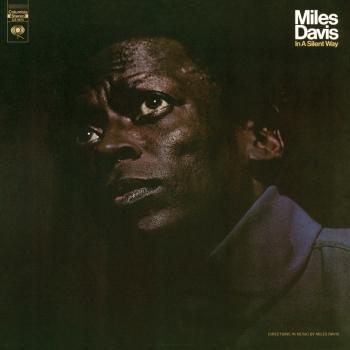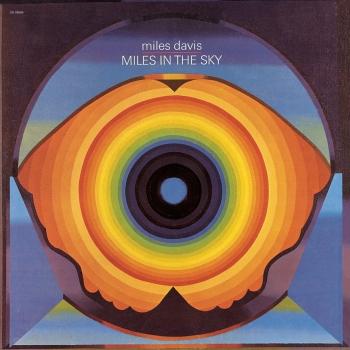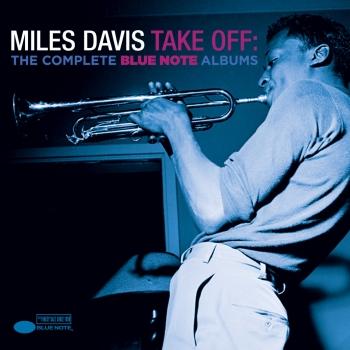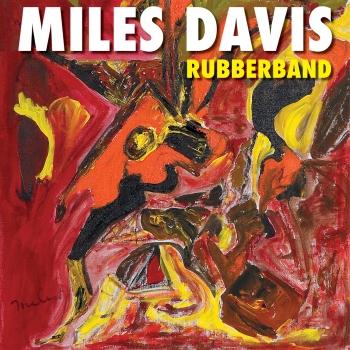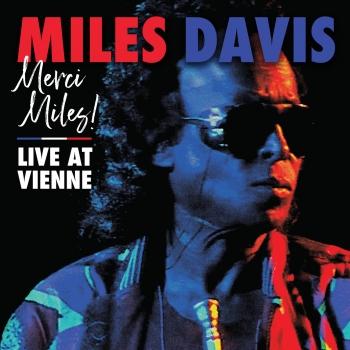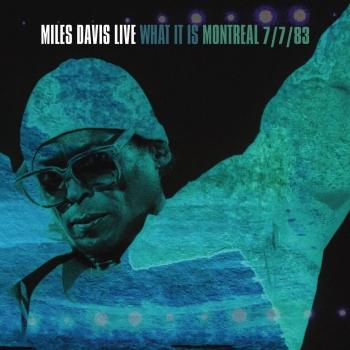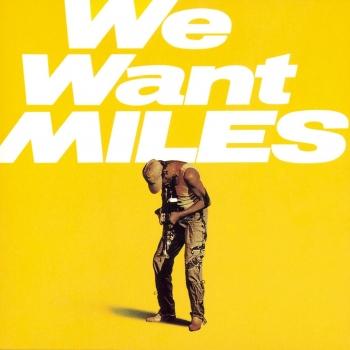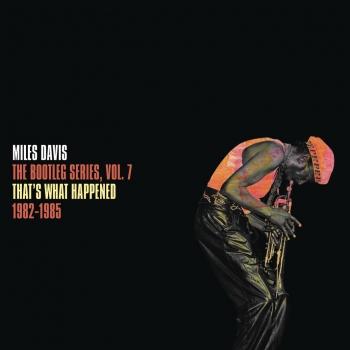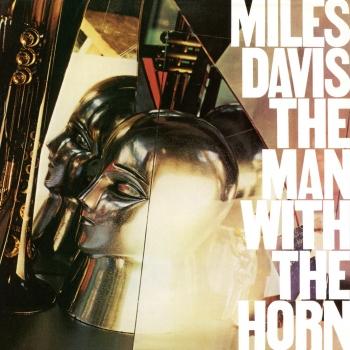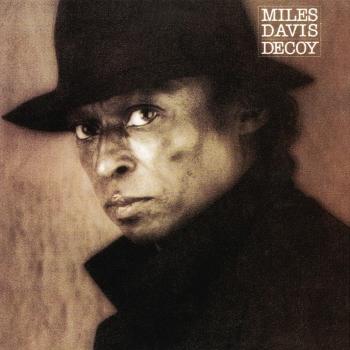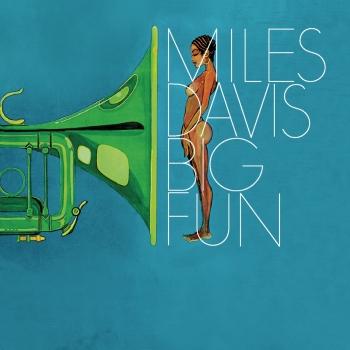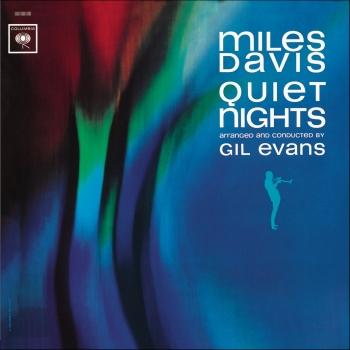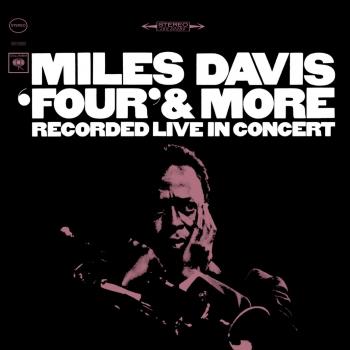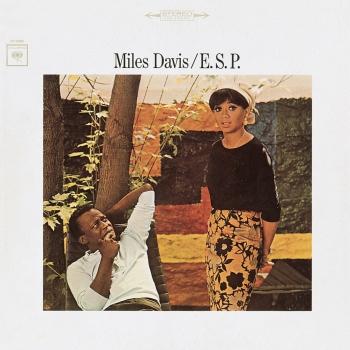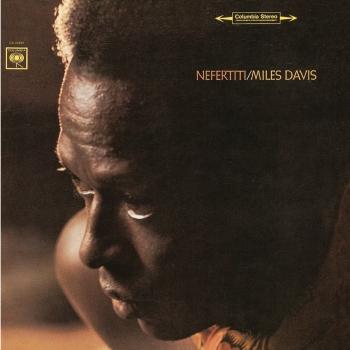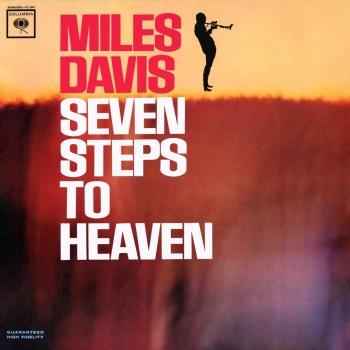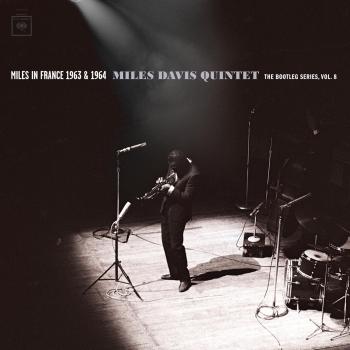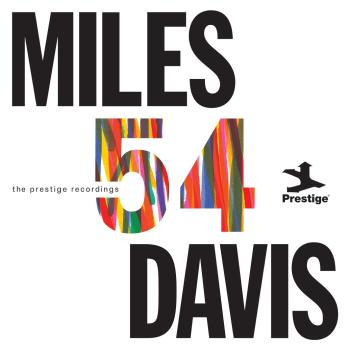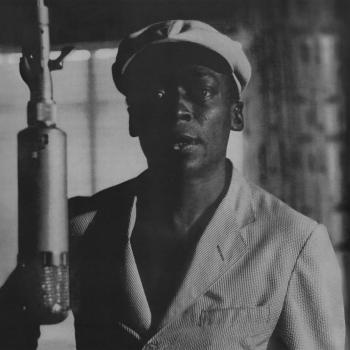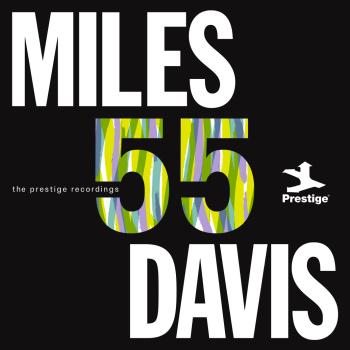
Miles at The Fillmore: Miles Davis 1970: The Bootleg Series, Vol. 3 (Remastered) Miles Davis
Album info
Album-Release:
2014
HRA-Release:
28.11.2025
Album including Album cover Booklet (PDF)
I`m sorry!
Dear HIGHRESAUDIO Visitor,
due to territorial constraints and also different releases dates in each country you currently can`t purchase this album. We are updating our release dates twice a week. So, please feel free to check from time-to-time, if the album is available for your country.
We suggest, that you bookmark the album and use our Short List function.
Thank you for your understanding and patience.
Yours sincerely, HIGHRESAUDIO
- 1 Introduction (Live at Fillmore East, New York, NY - June 17, 1970) 00:04
- 2 Directions (Live at Fillmore East, New York, NY - June 17, 1970) 10:24
- 3 The Mask (Live at Fillmore East, New York, NY - June 17, 1970) 11:04
- 4 It's About That Time (Live at Fillmore East, New York, NY - June 17, 1970) 10:45
- 5 Bitches Brew (Live at Fillmore East, New York, NY - June 17, 1970) 13:41
- 6 The Theme (Live at Fillmore East, New York, NY - June 17, 1970) 00:36
- 7 Paraphernalia (Live at Fillmore West, San Francisco, CA - April 1970) 11:02
- 8 Footprints (Live at Fillmore West, San Francisco, CA - April 1970) 11:13
- 9 Directions (Live at Fillmore East, New York, NY - June 18, 1970) 10:10
- 10 The Mask (Live at Fillmore East, New York, NY - June 18, 1970) 11:30
- 11 It's About That Time (Live at Fillmore East, New York, NY - June 18, 1970) 12:04
- 12 Bitches Brew (Live at Fillmore East, New York, NY - June 18, 1970) 11:57
- 13 The Theme (Live at Fillmore East, New York, NY - June 18, 1970) 01:30
- 14 Spanish Key (Encore) (Live at Fillmore East, New York, NY - June 18, 1970) 10:20
- 15 The Theme (Encore) (Live at Fillmore East, New York, NY - June 18, 1970) 00:28
- 16 Directions (Live at Fillmore East, New York, NY - June 19, 1970) 12:50
- 17 The Mask (Live at Fillmore East, New York, NY - June 19, 1970) 10:00
- 18 It's About That Time (Live at Fillmore East, New York, NY - June 19, 1970) 11:28
- 19 I Fall in Love Too Easily (Live at Fillmore East, New York, NY - June 19, 1970) 01:48
- 20 Sanctuary (Live at Fillmore East, New York, NY - June 19, 1970) 03:25
- 21 Bitches Brew (Live at Fillmore East, New York, NY - June 19, 1970) 12:38
- 22 The Theme (Live at Fillmore East, New York, NY - June 19, 1970) 00:38
- 23 Miles Runs the Voodoo Down (Live at Fillmore West, San Francisco, CA - April 1970) 13:20
- 24 Directions (Live at Fillmore East, New York, NY - June 20, 1970) 10:48
- 25 The Mask (Live at Fillmore East, New York, NY - June 20, 1970) 11:15
- 26 It's About That Time (Live at Fillmore East, New York, NY - June 20, 1970) 11:04
- 27 I Fall in Love Too Easily (Live at Fillmore East, New York, NY - June 20, 1970) 01:21
- 28 Sanctuary (Live at Fillmore East, New York, NY - June 20, 1970) 03:21
- 29 Bitches Brew (Live at Fillmore East, New York, NY - June 20, 1970) 09:39
- 30 Willie Nelson (Live at Fillmore East, New York, NY - June 20, 1970) 09:22
- 31 The Theme (Live at Fillmore East, New York, NY - June 20, 1970) 00:37
Info for Miles at The Fillmore: Miles Davis 1970: The Bootleg Series, Vol. 3 (Remastered)
Miles Davis’ historic four-night stand at promoter Bill Graham’s legendary Fillmore East in New York City, June 17-20, 1970, is presented in its entire full-length unedited form for the first time as Miles At The Fillmore – Miles Davis 1970: The Bootleg Series Vol. 3.
At one of the most crucial moments in jazz and rock history, two months after the release of Miles’ groundbreaking double-album Bitches Brew in April 1970, he was beginning to discover – and be discovered by – the burgeoning rock audience that came of age in the late 1960s. Bitches Brew was a turning point for jazz and rock. Bill Graham had a long history of presenting jazz artists at the Fillmores but it was Miles who carried rock audiences to a new plateau.
In October 1970, Columbia Records released the 2-LP set Miles Davis At Fillmore, which consisted of performances culled from the four nights of shows at the Fillmore East (where Miles opened for fellow Columbia artist Laura Nyro). At that time the shows were edited to fit the LP format. The full unedited shows are now presented for the first time yielding 100-plus minutes of previously unreleased music.
The three additional bonus tracks add another 35 minutes of music, released here for the first time, recorded in April 1970, at the Fillmore West in San Francisco (where Graham put Miles and band on a bill with the Grateful Dead and Stone The Crows). Miles At The Fillmore – Miles Davis 1970: The Bootleg Series Vol. 3 now contains 135 minutes of previously unreleased music.
"Until now, the official recordings of Miles Davis' performances at the Fillmore East between June 17 and 20, 1970 have been limited to the double album Miles at the Fillmore. That set's producer Teo Macero, edited the recordings to create medleys of each night's music to four roughly 20-minute selections. This four-disc set contains all four concerts. There are 100 minutes of previously unreleased music from Wednesday through Saturday; an additional 35 minutes of unreleased music comes from a previous gig at the Fillmore West. On the FE shows,Davis' band opened for Laura Nyro. Bill Graham regularly booked jazz artists to play with rock and pop acts. At the time, Davis was actively courting the younger audience -- aided not only by Graham, but by FM DJs playing the just-released Bitches Brew. The band -- saxophonist Steve Grossman, Dave Holland on electric bass, drummer Jack DeJohnette, percussionist Airto Moreira, Chick Corea on electric piano, and Keith Jarrett on organ -- was loud and driving, its sound was drenched in wah-wah pedals; distortion was employed often. These dates are also historically significant because both keyboardists played in the group simultaneously for only three months. The program for each evening was basically the same: "Directions," "The Mask," "It's About That Time," "Bitches Brew," and "The Theme." But each disc offers a different bonus: an encore, an unexpected performance, or the added tracks from the Fillmore West gig. The charts are loose but focused, and the group's improvisational dynamic is breathtaking, entirely different each night. Davis is exceptionally strong. His playing is inventive, full of questions and muscular statements. Some notable solos occur on Wednesday's "It's About That Time," the Fillmore West's "Footprints" and "Paraphernalia," and the searing intensity displayed on "Directions," from Friday. Grossman's soprano playing is stunning on each version of "Bitches Brew"; his bluesy tenor playing is at its best on Thursday's "Spanish Key." Individually and collectively, DeJohnette and Holland add an extreme funkiness to the band's bottom. Their interplay is canny, full of nasty grooves -- check Thursday's "The Mask," or the throbbing pulse and roiling breaks on Friday's "Directions." Jarrett's colors, textures and stabs, add an entirely different dimension to the band's attack. Check the sinister vamping and spooky soloing on "Miles Runs the Voodoo Down" from the Fillmore West. Corea is alternately knotty and atmospheric. He can push the horns hard --as on Thursday's "Directions" -- or paint through Jarrett's wah-wah organ with an expressionist brush -- evidenced by Saturday's "Willie Nelson." Throughout his solos are risky and exploratory. Airto's vocal and percussion arsenal is wildly different, not only from tune to tune, but night to night. The sound is fantastic: balanced and detailed." (Thom Jurek, AMG)
Miles Davis, trumpet with Harmon mute
Steve Grossman, tenor saxophone, soprano saxophone
Chick Corea, Fender Rhodes electric piano with delay/fuzz pedals and ring modulator
Keith Jarrett, Fender Contempo Organ with delay/fuzz pedals + tambourine (Fillmore East tracks only)
Dave Holland, electric bass guitar with wah-wah pedal
Jack DeJohnette, drums
Airto Moreira, cuica, transverse flute, whistle, kazoo, shakers, bells, woodblock, tambourine
Recorded April 11, 1970 June 17–20, 1970 at Fillmore East, New York City; Fillmore West, San Francisco, CA (April 11, 1970 only)
Digitally remastered
Trumpeter Miles Davis grew up in East St. Louis, Illinois, just across the river from St. Louis, Missouri. His parents were affluent, and had the means to support his musical studies as a boy. He began playing the cornet at age nine, and received his first trumpet at around twelve or thirteen. He studied classical technique, and focused mainly on using a rich, clear tone, something that helped define his sound in later years.
As a teenager, he played in various bands in St. Louis, which was rich with jazz, as big bands often stopped there on tours throughout the Midwest and southern states. The most important experience he had was when he was asked to play in the Billy Eckstine band for a week as a substitute. The group included Charlie Parker, Dizzy Gillespie, and Sara Vaughan. After playing with these stars, Davis knew he had to move to New York to be at the heart of the jazz scene.
In Pursuit of Parker:
In 1944 Davis moved to New York City where he had earned a scholarship to study trumpet at the Juilliard School of Music. Upon arriving however, he sought after Charlie Parker, and meanwhile spent all of his time in jazz clubs listening to bebop. He was transfixed on the music, and grew utterly bored with his classical studies. After less than a year at Juilliard, he dropped out and tried his hand at performing jazz.
Although not particularly stunning, his playing was good enough to finally attract Charlie Parker, and Davis joined his quintet in 1945. He was often criticized for sounding inexperienced, and was compared unfavorably to Dizzy Gillespie and Fats Navarro, who were the leading trumpeters at the time. Both boasted stellar technique and range, neither of which Davis possessed. In spite of this, he made a lasting impression on those who heard him, and his career was soon set aloft.
Cool Jazz and a Rise to Fame:
Encouraged by composer and arranger Gil Evans, Davis formed a group in 1949 that consisted of nine musicians, including Lee Konitz and Gerry Mulligan. The group was larger than most bebop ensembles, and featured more detailed arrangements. The music was characterized by a more subdued mood than earlier styles, and came to be known as cool jazz. In 1949 Davis released the album Birth of the Cool (Captiol Records).
Change of artistic direction became central to Davis’ long and increasingly influential career. After dabbling in hard bop as a leader on four Prestige recordings featuring John Coltrane, he signed with Columbia records and made albums that featured Gil Evans’ arrangements for 19-piece orchestra. These were Miles Ahead, Porgy and Bess, Sketches of Spain, and Quiet Nights. He rose in popularity with these recordings, in part due to his signature sound, which he often enhanced by using a Harmon mute.
Kind of Blue and Beyond:
In 1959 Davis made his pivotal recording, Kind of Blue. It was a departure from all of his previous projects, abandoning complicated melodies for tunes that were sometimes only composed of two chords. This style became known as modal jazz, and it allows the soloist expressive freedom since he does not have to negotiate complex harmonies. Kind of Blue also featured John Coltrane, Cannonball Adderley, and Bill Evans. The album is one of the most influential in jazz, and is Columbia Records’ best-selling jazz record of all time.
In the mid 1960s Davis changed directions again, forming a group with Herbie Hancock, Wayne Shorter, Tony Williams, and Ron Carter. This group was known for the excellence of each individual member, and also for its unique performance approach. Each night the tunes would sound different, as the musicians would sometimes only loosely adhere to the song structures, and often transition from one right into the next. Each player was given the chance to develop his solos extensively. Like all of Davis’ previous groups, this quintet was highly influential.
Late Career:
Despite health problems, drug addiction, and strained personal relationships, Davis continued to play, changing his approach with each new project. In the late 60s and 70s, he began to experiment with electronic instruments, and grooves that were tinged with rock and funk music. Two famous recordings from this period are In a Silent Way and Bitches Brew. By the time the 1980s rolled around, Davis was not only a jazz legacy, but a pop icon, whose music, persona, and fashion style were legendary.
Davis died in 1991, as perhaps the most influential jazz artist ever. His vast body of work continues to be a source of inspiration for today’s musicians. (Jacob Teichroew, About.com Guide)
Booklet for Miles at The Fillmore: Miles Davis 1970: The Bootleg Series, Vol. 3 (Remastered)

